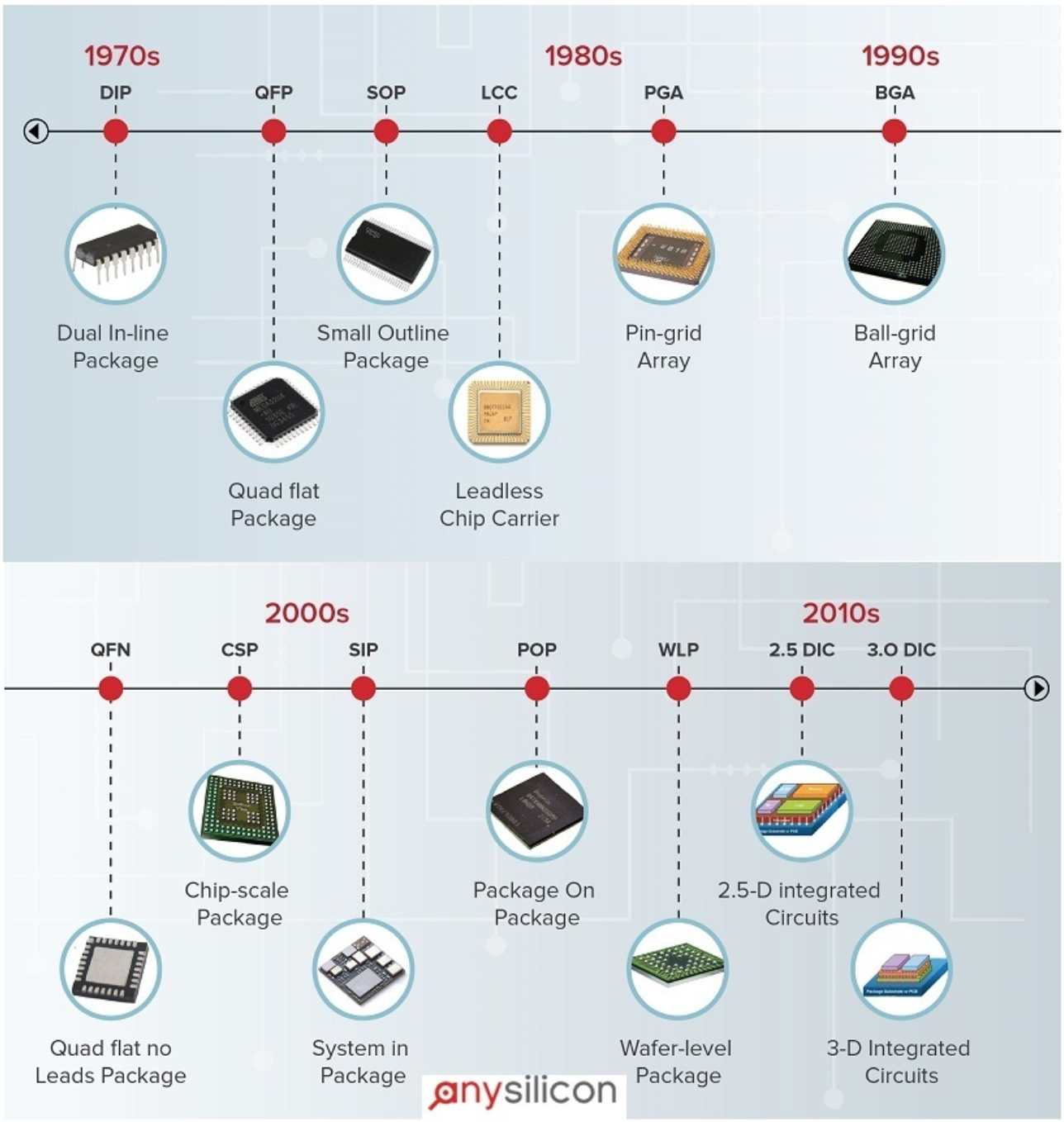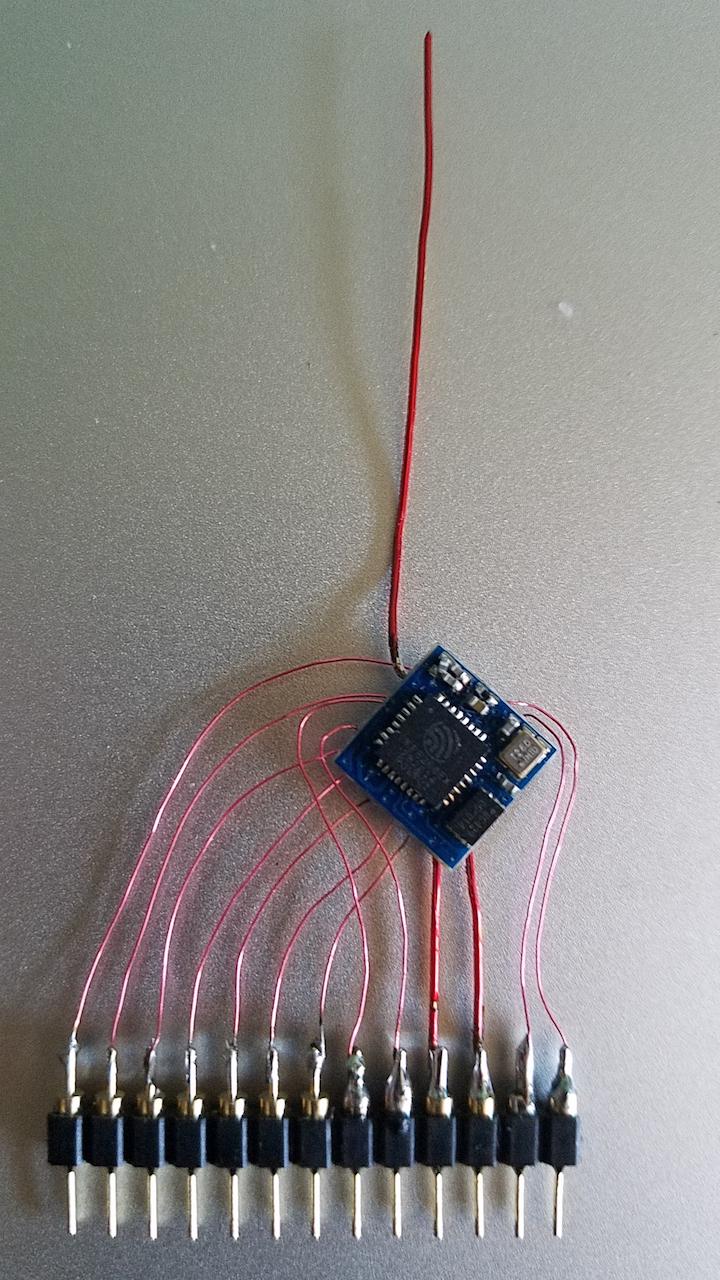Different types of ESP8266 module #5882
Replies: 1 comment
-
|
Posted at 2015-12-30 by Ollie I'll be following progress on your prototyping boards. I have some ESP8266-12 on order, but in their defence i've had a lot of mileage from the several ESP8266-01 boards I have, despite the restricted GPIO and memory constraints. Two GPIO is enough for a lot of applications. I have a DS18B20 sensor and 433Mhz radio running reliably. The 01 is possibly the version most Espruino users will have to hand too given it's application as a wifi adapter for the Pico - that's how I got started with them One disadvantage with the 01 is obviously how breadboard unfriendly it is. Posted at 2015-12-30 by profra @drazzy @ollie ..As far as ESP modules I have found chep and handy solution, see the links beneath... ordered but not received yet... the price is unbeatable so I have tried it.. ..another info.. ESP-07 is good one, I have a lot of them with 4Mb but I didn't see any new version with 32Mb... the best buy is ESP-12E of F now... ..very nice solution similar to ESP-01 but with more pins (+GPIO12/ADC +GPIO14), the modul is very small and with its number of pins is enough good for many applications, info here.. https://www.tindie.com/products/blkbox/4-layer-esp8266-wifi-module/ Posted at 2015-12-30 by DrAzzy I'm looking for modules like the 07 and 12 - ones with castellated pads on them, so I can make a board and stick them down to it. Through-hole pins are a non-starter. How do I know for sure whether the modules have 4MBytes (32mbit) or 4Mbit of flash? Is the kind with the ceramic antenna better in terms of RF performance? @ollie: How do you implement the 433mhz comms? Is it sending only, or receiving too? Posted at 2015-12-30 by Ollie Currently sending only. I've been building a fermentation controller. I'm using the 433Mhz radio to trigger those RF type plug sockets. Posted at 2015-12-30 by @allObjects
Pretty easy to take care of that as explained in post Bist du nicht willig, dann branche ich Gewalt!. Posted at 2015-12-30 by Ollie @allObjects I can't see the pics on that link, but I think I've seen that, I think you posted pics of it in here, or someone did? It's very innovative, but I wouldn't want to try and scale it ;) Posted at 2015-12-30 by DrAzzy Cool. You do the sending the usual way, eg, digitalPulse()? I recall that there were caveats relating to the 8266 and digitalPulse() somewhere. Posted at 2015-12-30 by tve In general the PCB antenna is better than the ceramic one, except in situations where there's a metal enclosure nearby, or something like that. Posted at 2015-12-30 by DrAzzy Thanks! That's just what I was hoping to find out @tve - I'll get some of that style, maybe even from that vendor. I'd never have expected that the dinky PCB antenna would be better than that ceramic one! Posted at 2015-12-30 by Ollie @drazzy, yes digitalPulse(). As for caveats, there are perhaps some misconceptions. I came at it reading and being told that the ESP8266 hardware's timer may not be accurate enough to facilitate accurate pulses, but seeing Arduino examples out there I was skeptical, and it turns out that's not the case. Hat tip to @tve who helped me optimise my transmit code, but the major stumbling block was that pinMode needs to be set explicitly - we don't need to do that when running the core Espruino. With pinMode set my original code worked fine, although the switching was less reliable that the optimised code mentioned. Happy to share anything you need here. Posted at 2017-10-09 by user82119 what is a breakout board......can any one please explain me in easy and sweet language?? Posted at 2017-10-09 by @allObjects In a maker - tinkerer, non-industrial manufacturing - context: A breadboard gives easy, breadboard and fat-finger wire-able access to devices - ICs, modules - that come in (small) packages that have a very small pin / lead pitch or do not even have pins / leads - but pads, balls,... For semiconductor packaging, see semiconductor-packaging, from where attached history diagram comes). Sometimes - actually most of the times - additional component - components that are required or most useful to use the device - put on that breakout bard to make makers life even more convenient... you can make such things yourself by a taking piece of board with just holes where you wire the device to and put pins on it. For surface mount ICs you can buy breakout boards. Espruino originated breakout boards and variety of useful breakout boards that go well with or are even specially built come from @gfwilliams and @drazzy. For special occasions you make them yourself: ESP8266 ESP-09 on a header. Attachments: |
Beta Was this translation helpful? Give feedback.



Uh oh!
There was an error while loading. Please reload this page.
-
Posted at 2015-12-30 by DrAzzy
So there are a lot of kinds of ESP8266 module... I'm wondering if anyone can give some thoughts on their relative merits.
Obviously, the ESP-01 is out, without the GPIO lines available.
There's the ESP-07, ESP-12, ESP-12E/F, and ESP-14
All of those seem to use the same pinout, and advertise the same 4MB flash.
The ESP-07 and ESP-12 seem to be identical, except that the ESP-07 has the ceramic antenna.
My spider sense tells me that the ceramic antenna is better than the printed PCB antenna used on the other modules.
The ESP-12E/F have the same pinout as the 07 and 12 - except they add that row of 6 pins along the bottom edge. However, it seems that those pins might as well not be there, since they're used for talking to the flash...
Then there's the ESP-14, which claims to have a little STM 8-bit micro in it, and pipes the pins of this micro to most of the external pins - but as I understand it, those pins won't be accessible within Espruino, so this is of limited utility.
So which of these should I be grabbing? I'm inclined at this point to think the 07 is the good one, assuming the ceramic antenna is better than the PCB trace one?
Are there others that I should be looking at? Is the 07 the good one?
My plan is to throw together a board design that brings the pins that need to be manipulated during flashing out to a button (so flashing is like "hold this button and run the flasher utility"), and breaks out the available GPIO pins to prototyping board including some power supply circuitry, and space to mount shit.
Beta Was this translation helpful? Give feedback.
All reactions